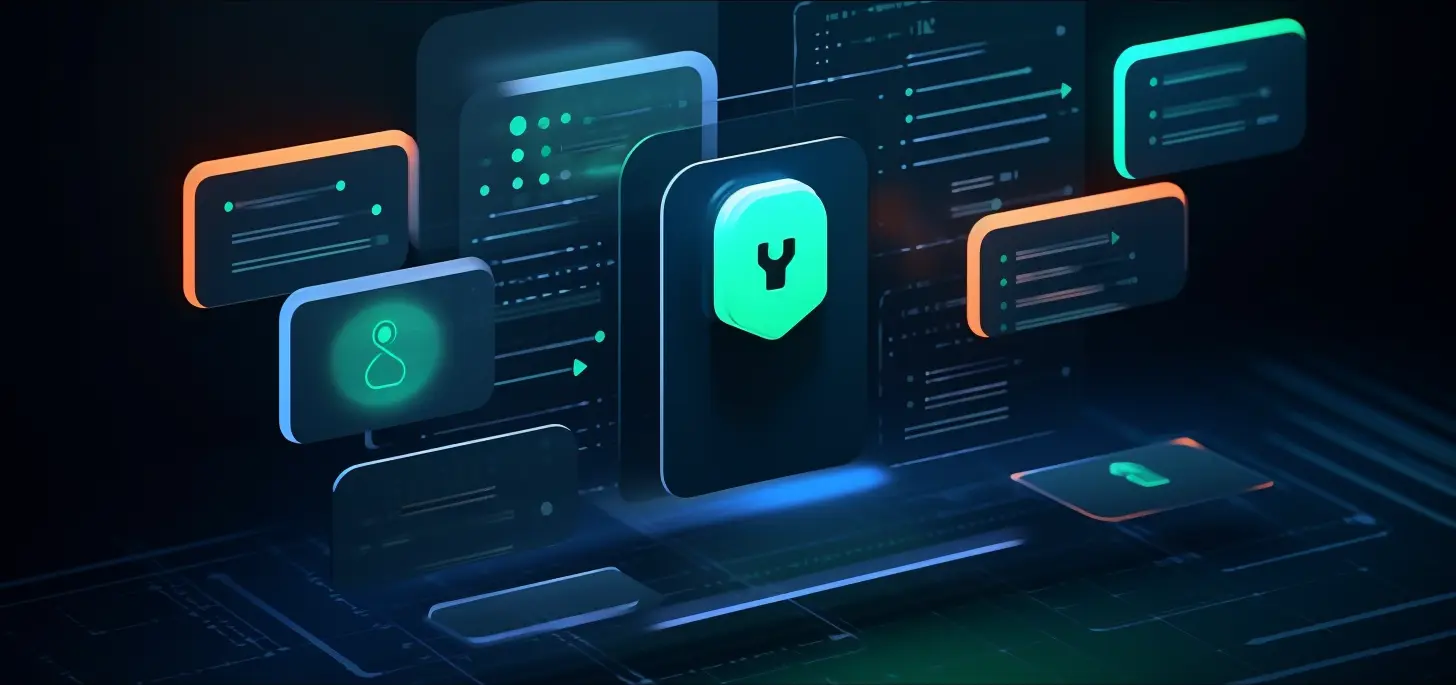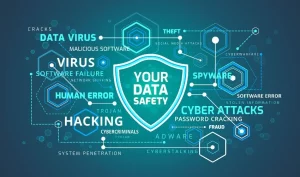In today’s interconnected digital world, where cyber threats loom large, ensuring robust cybersecurity has become paramount for individuals and organizations alike. With cyber attacks becoming increasingly sophisticated and prevalent, everyone must take proactive steps to protect their digital assets and personal information. In this regard, leveraging essential cybersecurity tools is fundamental. These tools serve as the first line of defense against various cyber threats, ranging from malware and phishing attacks to data breaches and identity theft. By equipping oneself with the right cybersecurity tools, individuals can significantly enhance their online security posture and safeguard against potential risks. In this article, we’ll explore the ten essential cybersecurity tools that everyone should consider incorporating into their digital arsenal for comprehensive protection in today’s cyber landscape.
Cybersecurity’s importance today:
Cybersecurity’s importance today cannot be overstated, as our lives have become increasingly dependent on digital technologies. From online banking and shopping to communication and entertainment, almost every aspect of modern life is conducted through digital platforms. However, this interconnectedness also exposes us to a myriad of cyber threats, including malware, ransomware, phishing attacks, and data breaches. Furthermore, with the proliferation of IoT devices and the rise of remote work, the attack surface has expanded, making cybersecurity even more critical. Without adequate protection, individuals and organizations are vulnerable to financial losses, reputational damage, and even legal ramifications. Therefore, in today’s digital age, prioritizing cybersecurity is not just prudent; it’s essential for safeguarding our privacy, financial security, and overall well-being.
. Overview of essential tools:
An overview of essential cybersecurity tools reveals a diverse array of solutions designed to address different aspects of online security. These tools encompass a broad spectrum, ranging from antivirus software and password managers to virtual private networks (VPNs) and intrusion detection systems (IDS). Each tool serves a specific purpose in defending against various cyber threats, such as malware, phishing attempts, and unauthorized access. By combining multiple tools, individuals and organizations can create a layered defense strategy to mitigate risks effectively. Moreover, as cyber threats continue to evolve, so do these tools, with constant updates and advancements aimed at staying ahead of emerging threats. Overall, understanding and implementing these essential cybersecurity tools are crucial steps towards enhancing digital security and protecting against potential cyber attacks.
Antivirus Software:
Antivirus software stands as one of the foundational pillars of cybersecurity, essential for individuals and organizations alike. Its primary function revolves around detecting, preventing, and removing malicious software, commonly known as malware, from computers and networks. By scanning files, emails, and web traffic in real-time, antivirus software can identify and neutralize various types of threats, including viruses, worms, Trojans, and ransomware. With the ever-growing sophistication of malware and the continuous evolution of cyber threats. That having reliable antivirus software installed on devices is crucial for maintaining a robust defense against cyber attacks. By regularly updating virus definitions and running scheduled scans, users can ensure their systems remain protected from the constantly evolving landscape of digital threats.
Detects & removes malware:
Antivirus software plays a critical role in cybersecurity by serving as a vigilant guardian against malware. A term encompassing various forms of malicious software designed to disrupt, damage, or gain unauthorized access to computer systems. One of its primary functions is to detect and remove malware, thereby safeguarding users’ devices and sensitive information from harm. Whether it’s a stealthy Trojan horse lurking within seemingly harmless files or a ransomware threat encrypting vital data, antivirus software acts as a frontline defense, swiftly neutralizing these digital adversaries. Its ability to detect and remove malware not only protects individual users from potential data loss, financial theft, or privacy breaches. But also contributes to collective efforts in combating cybercrime and maintaining the integrity of the digital ecosystem.
Protects in real-time:
Antivirus software is a vital component of cybersecurity as it operates in real-time to provide continuous protection against evolving threats. By constantly monitoring system activities, file downloads, email attachments. Web browsing sessions, antivirus software can promptly identify and neutralize potential threats before they can cause harm. This real-time protection mechanism is crucial in today’s dynamic cyber landscape. Where new malware variants and sophisticated attack techniques emerge rapidly. By leveraging heuristic analysis and behavioral monitoring, antivirus programs can proactively detect suspicious activities .This proactive approach enables antivirus software to thwart zero-day attacks, which exploit vulnerabilities that are yet to be patched or documented.
Password Manager:
Securely stores passwords:
Securely storing passwords is paramount in maintaining robust cybersecurity practices, and password manager tools play a pivotal role in achieving this goal. These tools provide a secure and convenient solution for managing passwords across various accounts and platforms.Furthermore, many password managers offer multi-factor authentication (MFA) options, adding an extra layer of protection to access the password vault. With the proliferation of online accounts and the increasing prevalence of data breaches, securely storing passwords with a trusted password manager is essential for safeguarding sensitive information and preventing unauthorized access to accounts. By centralizing password management and enforcing strong security measures, password managers empower individuals . The organizations to maintain better control over their digital identities and protect against password-related cyber threats.
Generates strong ones:
In addition to securely storing passwords, one of the key functions of password managers is their ability to generate strong and complex passwords. Strong passwords are essential for thwarting various cyber threat. such as brute-force attacks and dictionary-based hacking attempts. Password managers employ sophisticated algorithms to generate randomized passwords that are long, complex, and difficult to guess or crack. These passwords typically consist of a combination of uppercase and lowercase letters, numbers, and special characters, making them highly resistant to common password cracking techniques. By automatically generating strong passwords for each account, password managers eliminate the need for users to create and remember complex passwords manually. This not only enhances security but also promotes good password hygiene by discouraging the use of weak or easily guessable passwords. Furthermore, since password managers store these generated passwords securely, users can access them whenever needed without compromising security.
Virtual Private Network (VPN):
Encrypts internet traffic:
Encrypting internet traffic is a fundamental aspect of cybersecurity, particularly in safeguarding sensitive data from unauthorized access or interception. Virtual Private Network (VPN) services are instrumental in achieving this encryption by creating a secure . Encrypted connection between a user’s device and the internet. When a user connects to a VPN, their internet traffic is encrypted and routed through a secure tunnel to a remote server operated by the VPN provider. This encryption process ensures that any data transmitted between the user’s device and the internet is shielded from prying eyes and potential eavesdroppers. Additionally, VPNs also offer anonymity by masking the user’s IP address and location, further enhancing privacy and security online.
Ensures online privacy:
Ensuring online privacy is a critical concern in today’s digital landscape, where personal information is constantly at risk of being exploited or compromised. By encrypting internet traffic and masking the user’s IP address, VPNs prevent third parties, such as ISPs, hackers, and government agencies, from monitoring or tracking their online activities. This encryption ensures that sensitive information, including browsing history, online communications. The personal data, remains confidential and inaccessible to unauthorized entities. Moreover, VPNs enable users to bypass geographical restrictions and censorship, allowing them to access content. As such, utilizing a VPN is essential for anyone seeking to protect their privacy and security while navigating the internet.
Firewall:
Controls network traffic:
Controlling network traffic is like managing the flow of cars on a road to ensure safety. Firewalls act as traffic cops, checking every incoming and outgoing data packet to see if it’s safe to pass through. They use preset rules to decide which packets can go through and which ones should be stopped. This helps prevent hackers or malware from sneaking into your network and causing trouble. By controlling network traffic, firewalls keep your digital neighborhood safe and secure from cyber threats, like viruses or hackers trying to break in. They’re like the gatekeepers of the internet, making sure only the right traffic gets through while blocking the bad stuff.
Blocks unauthorized access:
Blocking unauthorized access is a crucial part of cybersecurity, akin to locking the doors and windows of a house to keep intruders out. Firewalls serve as digital barriers, standing guard at the entry points of networks to prevent unauthorized users or malicious software from gaining access. These barriers are fortified with security rules that dictate who is allowed to enter and what actions they can perform once inside. By scrutinizing incoming and outgoing data packets, firewalls identify suspicious or unauthorized attempts to access the network and promptly block them.
Multi-factor Authentication (MFA):
Adds extra security layer:
Adding an extra security layer is like putting an extra lock on your door. Multi-factor authentication (MFA) provides this extra layer of security by asking for more than just a password when you log in. It might ask for a code sent to your phone or a fingerprint scan in addition to your password. MFA makes it much harder for hackers to break into your accounts, even if they guess your password. This makes your accounts much safer from things like phishing scams or stolen passwords. In simple terms, MFA adds an extra barrier to protect your digital stuff, making it more secure and harder for bad guys to get in.
Protects against breaches:
Protecting against breaches is like reinforcing the walls of a fortress to defend against invaders. Security measures such as encryption, firewalls, and intrusion detection systems work together to fortify digital environments against potential breaches. Encryption scrambles sensitive data so that even if it’s intercepted, it’s unreadable to unauthorized users. Firewalls act as digital barriers, monitoring and controlling the flow of data to prevent unauthorized access. Intrusion detection systems keep a watchful eye on network traffic, alerting administrators to any suspicious activity that could indicate a breach.
Secure Web Browser:
Blocks malicious sites/scripts:
Blocking malicious sites and scripts is akin to setting up roadblocks to prevent dangerous traffic from entering your neighborhood. These tools utilize databases of known malicious sites and patterns of suspicious behavior to identify and block potentially harmful content in real-time. By doing so, they protect users from various cyber threats. Like including malware, phishing attempts, and drive-by downloads, which can compromise sensitive information or harm devices. Additionally, these security measures help safeguard against the execution of malicious scripts that could exploit vulnerabilities in web browsers or plugins.
Provides safe browsing:
Providing safe browsing is like having a trustworthy guide through a maze, ensuring you avoid dangerous paths. Secure web browsers and tools keep you safe online by warning about harmful websites or downloads. They also isolate risky web pages to protect your device from malware. With regular updates, they stay ahead of new threats, making sure your online journey is free from harm. Simply put, safe browsing tools act as your digital guardian, keeping you safe from online dangers as you explore the internet.
Intrusion Detection System (IDS):
Alerts for breaches:
Alerts for breaches act as digital alarm systems, promptly notifying organizations of unauthorized access or security incidents within their networks. These alerts provide essential information about the nature and severity of the security event. Enabling organizations to respond swiftly and effectively to mitigate the impact of the breach. By receiving timely alerts for breaches, organizations can take proactive measures to contain. The incident, investigate the root cause, and implement remediation steps to prevent further damage or data loss.
Data Encryption Tools:
Secures sensitive data:
Securing sensitive data is like locking it in a safe, keeping it safe from prying eyes. Encryption technology scrambles the data into a code .That only those with the right key can unlock, ensuring it stays protected even if it’s intercepted. Access controls further restrict who can see or change the data, making sure only authorized users can access it. Whether it’s personal info or business secrets, securing sensitive data is crucial for keeping it safe from hackers and other threats. It’s like putting a strong lock on your most valuable possessions, keeping them safe from harm in the digital world.
Protects confidentiality:
Protecting confidentiality is like keeping secrets safe in a locked box, ensuring that sensitive information remains private and inaccessible .Encryption technology plays a vital role in this process by transforming data into a scrambled format that only authorized . The users can decipher with the correct decryption key. By encrypting sensitive information, organizations can prevent unauthorized access or interception, maintaining the confidentiality of data . Additionally, access controls and authentication mechanisms further bolster confidentiality by limiting access to authorized users with the appropriate permissions. Whether it’s personal details, financial records, or trade secrets, protecting confidentiality is essential for preserving privacy and trust. Just as a locked box keeps secrets safe, maintaining confidentiality shields sensitive information from exposure.
Security Patch Management Software:
Keeps systems updated:
Keeping systems updated is a crucial aspect of maintaining cybersecurity and ensuring optimal performance. By staying current with updates, organizations and individuals can safeguard sensitive data, prevent system crashes. Additionally, updates often include enhancements to features and functionality, improving user experience and overall system efficiency. Establishing a routine for updating systems, coupled with implementing automated update mechanisms. Where possible, is essential for staying ahead of emerging threats and maintaining a resilient digital infrastructure.
Reduces vulnerabilities:
Regularly updating systems is paramount in reducing vulnerabilities that can compromise security and integrity. Vulnerabilities arise from various sources, including software bugs, coding errors, or the discovery of new attack methods by cybercriminals. By promptly applying updates and patches provided by software vendors, organizations . The users can address these vulnerabilities before they are exploited. Failure to update leaves systems exposed to potential breaches, data leaks. The other security incidents, as cybercriminals actively seek out unpatched vulnerabilities to infiltrate systems and networks
Security Awareness Training Platforms:
Educates users on best practices:
System updates also play a significant role in educating users on best practices for maintaining a secure digital environment. When updates are released, they often come with accompanying information about security vulnerabilities they address . The importance of applying them promptly. This serves as a valuable opportunity to raise awareness among users about the importance of keeping their systems up to date. By fostering a culture of awareness and accountability around system updates, organizations and individuals can empower users to actively. Participate in safeguarding their digital assets and reducing the likelihood of falling victim to cyber threats.
Builds a security culture:
Regular system updates contribute significantly to building a robust security culture within organizations and communities. By emphasizing the importance of staying current with software patches and security fixes, businesses instill a sense of responsibility. Awareness among employees regarding cybersecurity. This fosters a culture where security is prioritized at every level, from frontline staff to executive leadership. Moreover, consistent communication about the reasons behind updates, potential risks of not updating. The overall impact on security helps to reinforce the significance of proactive measures. Additionally, encouraging open dialogue and providing resources for training and support further strengthens. The security culture by empowering individuals to take ownership of their role in protecting sensitive information and systems. Ultimately, a strong security culture cultivated through regular system updates serves as a proactive defense mechanism against cyber threats. The reinforces the resilience of organizations in the face of evolving security challenges.
Conclusion:
In summary, these ten essential cybersecurity tools provide a solid foundation for protecting against online threats. From antivirus software to password managers and encryption tools, each serves a critical role in enhancing digital security. By incorporating these tools into their arsenal, individuals and businesses can bolster their defenses, mitigate risks. Navigate the digital landscape with greater confidence and resilience.




